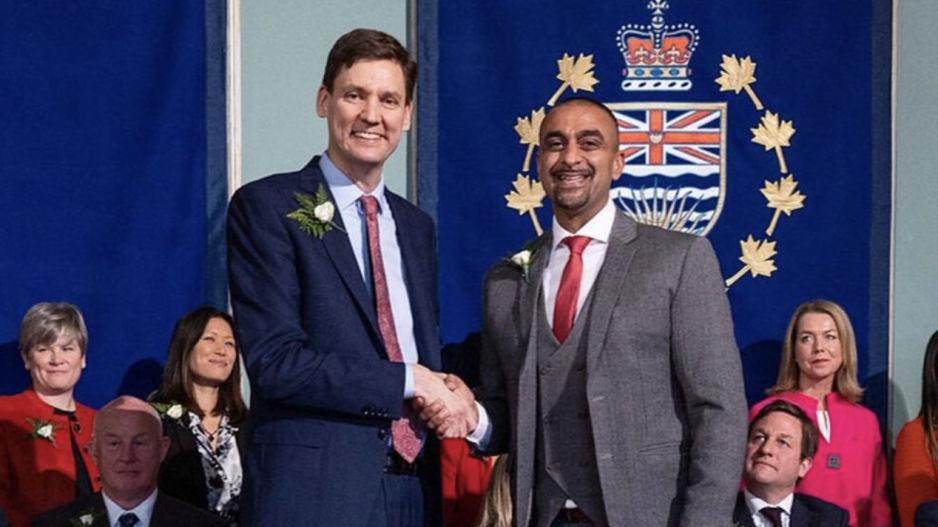David Eby’s latest Homes for People housing plan is aimed at creating more “missing middle” housing, in the belief that increased supply will have the trickle-down effect of making housing more affordable.
More supply is necessary, but in the absence of accompanying policies to guarantee that this housing is actually affordable, we can expect little change to our acute housing affordability crisis.
Eby’s plans to legalize secondary suites across B.C., create more housing on government-owned land and take action to regulate short-term rentals are all well and good. The proposal to allow up to four homes on a single-family lot in many places, however, will likely fuel higher land prices, as developers and investors gobble up older houses at inflated prices in anticipation of building greater density. These are not recipes for affordable housing. And the flipping tax is five years too late, and quite useless as housing prices are falling.
The only innovative-thinking piece in Eby’s plan is the proposal to incentivize homeowners to build an affordable secondary suite in their homes, with a $40,000 forgivable loan, conditional on the new unit being below-market “affordable rental housing” for at least five years. For the first time in decades, the government is providing a financial incentive for the private sector to build affordable rental housing. This may actually have a near-term impact on today’s housing affordability crisis, if municipalities can process the permits quickly, and if there are good mechanisms in place to monitor the affordability of the suites.
It could be a game changer, if it were accompanied by other similar innovative policies to incentivize the private sector, which has the know-how, the capability, and the drive to build new homes on budget and on time. Make it financially worthwhile for a builder to build affordable rental housing through income tax breaks, like the 1970’s Multiple Unit Residential Buildings (MURB) program. Most of the older, affordable rental stock in Canada that exists today was built in the 1970s under this innovative housing program.
All things being equal, the laws of supply and demand say that if there’s more supply, prices will fall. But all things are not equal in the B.C. housing market. According to Statistics Canada, an astonishing 49 per cent of all B.C. condos were bought by investors since 2016.
This scale of investor demand is beyond normal, commodifying housing to an extent never before seen here. It throws the normal supply and demand equation out of whack, because the demand side of the equation is skewed by investors who continuously drive prices higher, beyond the reach of B.C. employment incomes.
Without looking at the demand side of the equation, Eby’s plan is bound to fail.
It’s astonishing that a progressive NDP government is adhering to a debunked right-wing, supply-side economic theory promoted by the real estate industry.
Who are we building all this supply for? First-time homebuyers? Or a hedge fund’s next investment? Is a home being built for shelter or for an investment?
The investors who dominate the demand side are not “evil,” with cheap money available over the past decade of low interest rates – the investors are everyone.
They are patient money: Private equity funds, residential equity investment trusts (REITs), other pools of capital, foreign buyers, satellite owners and ordinary mom-and-pop investors trying to build a future for their families. And they are impatient money: Speculators, flippers and home-hoarders looking for a quick profit.
Investors can’t get enough of Vancouver or B.C. We have the Pacific Ocean, the mountains, the views, the beaches and stable governance. What’s not to love?
When any investor owns a home, they mark it up once or even twice to get a return or a profit before the renter/owner end-user pays the highest housing prices in Canada. Investors stockpile our housing, like middlemen, before the retail consumer lives in it and pays top dollar.
Local homebuyers can’t compete with investors.
And everyone is making money from this commodification of Canada’s housing. All levels of government now count on housing’s associated taxes, and fees – and, of course, the real estate industry loves it.
This is our housing affordability crisis.
Even though housing prices have come down slightly, mortgage interest costs have gone up, making affordability even more remote. When middle-income people earning $100,000, Millennials and even Gen Xers can’t afford to buy a home in Vancouver or Victoria, that’s a societal problem, not just an economic problem. A great city needs a diversity of families, incomes, cultures and creative interests, immigrants, and people in the service industry to thrive. A city is not a city if it’s just an enclave for the rich.
Where are Eby’s announcements to finance non-profits and co-ops to build more affordable homes for communities in need, with government backed preferred interest rates? This makes building affordable, units financially feasible – enforced with a municipal housing agreement to ensure affordability. Admittedly, it’s a small segment of the housing market, but it’s an important and necessary one.
What Eby’s housing plan has demonstrated to anyone in any business, is that this provincial government unfortunately, does not understand the financial realities and the basic dynamics of the real estate market, and is either unwilling or incapable of trying innovative solutions to tackle the housing affordability crisis.
Arny Wise is an urban planner and retired developer in Vancouver.




